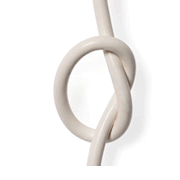Sterilization

Sterilization is permanent birth control. It’s one of the most effective kinds of birth control available, but it’s also the biggest commitment. Sterilization is for people who are sure they will never want to get pregnant or get someone else pregnant. There are sterilization procedures both for people with a uterus, ovaries, and fallopian tubes (this procedure is called tubal ligation) and for people with testicles and a penis (this procedure is called vasectomy). Neither of these types of sterilization affects sexual pleasure or performance, and you can still orgasm after sterilization.
Types of Sterilizations
Tubal ligation is a super-effective, permanent birth control method (also called sterilization) for people with vaginas. It’s a surgery that you can do immediately after giving birth or at any other time. The procedure closes your fallopian tubes, which normally carry eggs from your ovaries to your uterus. Your fallopian tubes are also where fertilization happens. Fertilization occurs when sperm meets an egg in one of your fallopian tubes, so closing off the fallopian tubes means that sperm can’t reach the eggs.
There are a few different ways that fallopian tubes can be closed off, and they can also be fully removed, which decreases the chances of ovarian cancer (which often begins in the fallopian tubes). Tubal ligation does NOT involve removing the ovaries, so your hormones will not be changed by the procedure.
There are two types of tubal ligation procedures out there—laparoscopy and mini-laparotomy. Because these methods involve a surgical procedure, you’ll need some type of anesthesia for either one. Recovery times vary from one or two days to a few weeks.
While it is sometimes possible to reverse tubal ligation if part of the fallopian tubes are left in your body, it’s a difficult process that can be very expensive, and there is no guarantee that you’ll be able to get pregnant afterward. In-vitro fertilization is possible after tubal ligation but it can also be very expensive, it’s often not covered by insurance, and it’s also not guaranteed to end in pregnancy. It’s best to plan for tubal ligation to be permanent.
Vasectomies are permanent birth control (also called sterilization) for people with penises. Not only are they the most effective birth control available (other than not having penis-in-vagina sex at all, ever), they’re simpler and cheaper. A vasectomy is a quick procedure that closes off the vas deferens, which are the tubes that carry sperm. Sperm are cells that combine with other fluids to create semen, the whitish fluid that comes out of your penis when you ejaculate (cum). After a vasectomy, your testicles will still produce sperm, but the sperm cells will die and be reabsorbed into your body.
A vasectomy won’t affect your hormones; the appearance, consistency, or taste of your semen; your sex drive; your enjoyment of sex (if anything, you may enjoy it more because you no longer have to worry about causing a pregnancy); or your sexual performance. So you can still ejaculate after a vasectomy, and nothing about sex will change. All that’s different is that there won’t be any sperm cells in your semen so you won’t be able to cause a pregnancy.
Vasectomies can take up to 12 weeks to become fully effective, so to prevent pregnancy, you’ll need to use another form of birth control after the procedure until your provider performs a test that shows your semen doesn’t contain sperm anymore.
While it is sometimes possible to reverse a vasectomy, the reversal procedure is more complicated and more expensive than the vasectomy itself, and there is no guarantee that it will work. In-vitro fertilization is possible after vasectomy, but it can be very expensive, it’s often not covered by insurance, and it also is not guaranteed to end in pregnancy. It’s best to plan for vasectomy to be permanent.
Details
Costs
How to Use It
There are three sterilization methods available today: Laparoscopy, Mini-laparotomy, and Laparotomy. Laparotomy is the most major surgery of the three, but it’s also the least common. It requires a hospital stay for a couple of days and the recovery time can take weeks. Laparoscopy and Mini-Laparotomy are less intense, don't necessarily involve overnight hospitalization, and recovery time is faster. Sterilization is effective immediately.
Side Effects
There are positive and negative things to say about each and every method. And everyone's different—so what you experience may not be the same as what your friend experiences.

